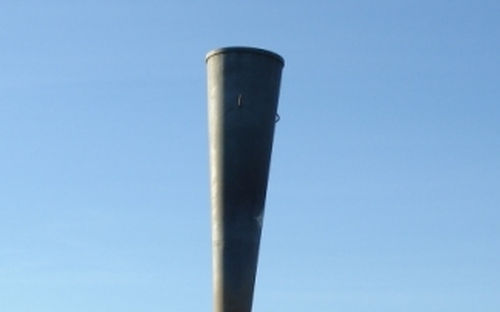Shimla – In a significant technological advancement aimed at safeguarding Himachal Pradesh’s apple crops from hail damage, the Indigenous anti-hailgun developed by IIT Mumbai will now be connected to a Doppler radar. This integration will enable precise tracking of hail clouds, thereby enhancing the effectiveness of the anti-hailgun.
After three years of successful trials of the Indigenous anti-hailgun installed in Mandhol, Shimla district, engineers from IIT Mumbai have decided to implement this upgrade following a thorough inspection. Technical support for this initiative will be provided by scientists from the Defense Research and Development Organization (DRDO)’s Pune laboratory.
The project also explores the possibility of integrating artificial intelligence with the anti-hailgun, which could further optimize its performance. One of the standout features of the indigenous anti-hailgun is its cost efficiency. While imported anti-hailguns cost around Rs 1.5 crores, the IIT Mumbai-developed version is priced at just Rs 31 lakhs. Additionally, the operational cost is significantly lower, as the indigenous hailgun runs on LPG, unlike the foreign versions that use the expensive and less accessible acetylene gas.
Dr. A.P. Das, Director of the High Energy Materials Research Laboratory (HEMRL) in Pune, under the Ministry of Defense, assured that the indigenous anti-hailgun poses no environmental risks. “The waves emitted by the hailgun enter the atmosphere in a controlled manner, ensuring no harm to the environment. Our team has meticulously studied the data during the tests, and we will be submitting our report to IIT Mumbai soon,” he stated.
The integration of Doppler radar is expected to provide accurate weather data, which will further boost the hailgun’s efficiency. This advancement marks a promising step towards protecting the vital apple crops of Himachal Pradesh, ensuring better yields and economic stability for the region’s apple growers.
Research on the effectiveness of anti-hailguns has shown promising results. Studies indicate that the strategic use of anti-hailguns can reduce hail damage to crops by up to 50-60%. The sound waves generated by the hailgun disrupt the formation of hailstones, causing them to fall as smaller, less harmful ice particles or as rain. This technology not only protects crops but also mitigates potential economic losses for farmers.







